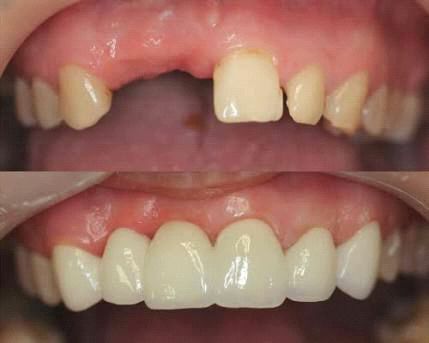Prosthodontics is the dental specialty that treats patients with missing or deficient teeth and/or oral and maxillofacial tissues. Optimal oral health and esthetics are obtained for patients through the use of dental implants, dentures, veneers, crowns and teeth whitening. Through diagnosis, treatment planning, rehabilitation and maintenance, a prosthodontist can improve the oral function, comfort, appearance and health of a patient.
Bridges
Traditional methods to replace a missing tooth or teeth include the fabrication of a bridge. To replace a missing tooth with a bridge, at least one tooth on either side of the space created by the missing tooth must be prepared for a crown. Then a false tooth is joined to the crowns, and the entire structure is cemented to the prepared teeth. The patient cannot remove the bridge, and special aids are available to keep it clean.
Dental Implants
Today’s dental implants are typically made of titanium and may be parallel-sided or tapered and may or may not have threads. These fixtures are placed into the jawbone and allowed to heal until they are “integrated” into the bone. Dental implants may be used to replace one, many or all of a patient’s teeth.
Dentures
When a patient no longer has any natural teeth, complete dentures are the traditional method to restore function and appearance. Many patients experience difficulty wearing conventional dentures because of poor stability and decreased chewing function. The use of dental implants to improve the stability and retention of dentures is becoming quite popular.
Veneers
Porcelain veneers are used to modify the shape and color of teeth. Veneers are thin shells of porcelain that are etched and then bonded to the enamel of the teeth. Tooth preparation is necessary to avoid over bulking of the tooth, but it is limited to the enamel and usually involves only a few surfaces of the tooth.


